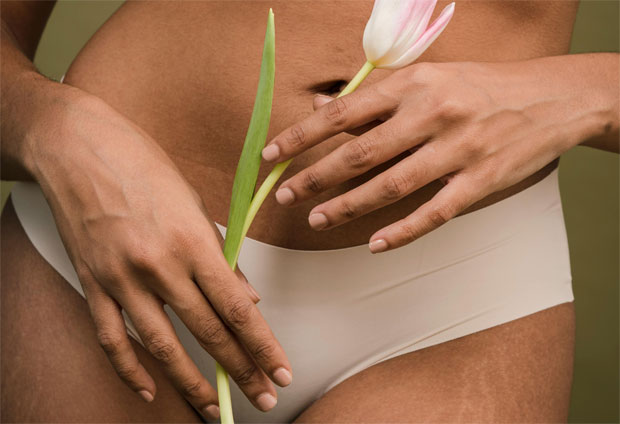Understanding the Growing Interest in Labia Reduction: Why Women Choose It

Understanding the Growing Interest in Labia Reduction
Labia Reduction, also known as Labiaplasty, is a surgical procedure designed to reshape or resize the labia minora or labia majora, and has become increasingly common in recent years. For some women, it’s about addressing physical discomfort, while for others, it’s tied to aesthetic preferences or emotional well-being. Whatever the reason, the growing interest in labia reduction highlights a broader conversation about female autonomy and body confidence.
If you want to understand the specifics of this topic further, explore Labia Reduction here. This article delves into the motivations, misconceptions, and realities of labiaplasty to provide a comprehensive understanding.
What Is Labiaplasty?
Labiaplasty is a form of cosmetic or reconstructive surgery that alters the external female genitalia. This procedure primarily involves the labia minora, the inner folds of skin surrounding the vaginal opening. Some women also choose to address the labia majora, the outer folds.
Although it is often categorized as a cosmetic procedure, labiaplasty is not solely about appearance. For many women, it provides relief from physical discomfort or resolves emotional concerns stemming from dissatisfaction with the shape or size of their labia.

A Surge in Popularity: What’s Driving the Trend?
There’s a growing interest in labia reduction and labiaplasty has seen a significant rise in demand globally. According to the International Society of Aesthetic Plastic Surgery (ISAPS), it ranks among the most popular cosmetic procedures today. But why are more women opting for labiaplasty?
1. Relief from Physical Discomfort
One of the most common reasons women pursue labiaplasty is to alleviate physical discomfort caused by enlarged or asymmetrical labia. Common issues include:
- Pain during physical activities like cycling, running, or horseback riding.
- Irritation or chafing from tight clothing such as leggings or swimsuits.
- Discomfort during sexual intercourse due to excess tissue.
For these women, labiaplasty isn’t just about appearance; it’s about improving their quality of life. Post-surgery, many report being able to fully enjoy activities they previously found uncomfortable or even unbearable.
2. Boosting Aesthetic Confidence
Another reason women consider labiaplasty is dissatisfaction with the appearance of their genitalia. While beauty standards vary widely and are often shaped by cultural influences, feelings of self-consciousness about one’s body can deeply affect confidence.
Some women are influenced by what they see in media, such as digitally altered images or adult content. Others simply want their body to align with their own aesthetic ideals. For many, labiaplasty offers an opportunity to feel more confident, especially in intimate settings or while wearing certain types of clothing, like bikinis or tight gym wear.
3. Addressing Psychological and Emotional Well-Being
Beyond physical and aesthetic reasons, labiaplasty often provides emotional relief. Women who feel embarrassed or self-conscious about their labia may experience anxiety, particularly in intimate relationships. This can lead to avoidance behaviours, strained relationships, or even diminished self-esteem.
For those who undergo the procedure, the psychological benefits can be transformative. By aligning their physical appearance with their self-perception, women often feel more at ease in their bodies and relationships.

Myths and Misconceptions About Labiaplasty
Despite its increasing popularity, labiaplasty remains a subject of misunderstanding and stigma. Let’s debunk some common myths:
“Labiaplasty Is Purely Cosmetic”
While aesthetic concerns are valid reasons to pursue labiaplasty, many women undergo the procedure to address physical discomfort or functional limitations.
“The Procedure Is Unnecessary”
What’s necessary is highly subjective. For a woman struggling with physical pain or emotional distress, labiaplasty can be life-changing. Just as someone might seek braces for crooked teeth, women seeking labiaplasty are addressing a personal concern.
“Recovery Is Long and Complicated”
Modern surgical techniques have made labiaplasty minimally invasive, with shorter recovery times. Most women resume normal activities within a week or two, though full healing can take a few months.
“It’s Unsafe or Unnatural”
When performed by a qualified surgeon, labiaplasty is a safe and highly successful procedure. It’s a choice that empowers women to feel more comfortable and confident in their bodies.

Preparing for Labiaplasty: What to Expect
Choosing the Right Surgeon
Finding a board-certified plastic surgeon or gynecologist with experience in labiaplasty is crucial. During a consultation, you’ll discuss your medical history, goals, and any concerns. This step ensures that you have realistic expectations and are fully informed about the procedure.
Setting Realistic Expectations
Labiaplasty can address specific concerns, but it’s important to understand its limitations. Discussing your goals with your surgeon will help determine the most appropriate approach for your needs.
Pre-Surgical Instructions
Before surgery, you may need to:
- Stop taking certain medications or supplements.
- Avoid smoking, as it can affect healing.
- Prepare for recovery by arranging for rest and care post-surgery.

The Procedure and Recovery Process
Surgical Techniques
The two most common labiaplasty techniques include:
- Trim Technique: Excess tissue is trimmed along the edge of the labia and then sutured.
- Wedge Technique: A wedge-shaped section of tissue is removed from the labia, preserving the natural edge for a more subtle result.
Each method has its pros and cons, and the best choice depends on individual anatomy and goals.
Post-Surgery Recovery
Recovery typically involves manageable discomfort, which can be alleviated with prescribed pain relief. Here’s what to expect:
- Initial Healing: Swelling and tenderness are common in the first week. Icing the area can help reduce swelling.
- Resuming Activities: Most women can return to work within a week but should avoid strenuous activities for several weeks.
- Long-Term Healing: Full recovery, including the resolution of swelling and the softening of scar tissue, can take up to six months.
During recovery, it’s essential to follow your surgeon’s guidelines closely to ensure optimal results.
Is Labiaplasty Right for You?
Deciding on labiaplasty is a deeply personal process. To determine if it’s the right choice for you, consider the following:
- Physical Discomfort: Are you experiencing pain or irritation in daily activities?
- Emotional Well-Being: Does dissatisfaction with your labia affect your confidence or relationships?
- Aesthetic Goals: Are you seeking changes for yourself, not due to external pressures?
Labiaplasty isn’t about conforming to societal standards; it’s about feeling comfortable and confident in your own body.

Empowering Women Through Choice
At its core, labiaplasty represents empowerment and choice. Women deserve to make decisions about their bodies without judgment. Whether for functional relief, aesthetic enhancement, or emotional well-being, labiaplasty can profoundly improve quality of life.
As the interest in labia reduction remains and the conversation around this procedure continues to evolve, we can foster a more supportive and understanding environment by embracing diverse perspectives. To learn more about labiaplasty and its impact, consult with a trusted medical professional.
Guest Article.




